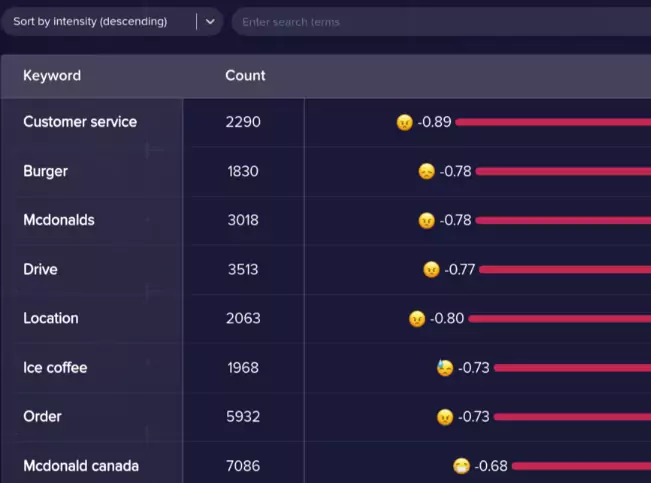Why Sentiment?
“I feel, therefore I am” could have preceded Descartes’ statement. Feelings have been part of our expression of ourselves since dawn of history. Primitive than thought, yet constitute a significant portion of our lives.
Emotions, opinion, and expression in language likely gives us that edge to thrive and not just survive. Martin and White (2005) suggest that the expression of emotional states, or affect, is institutionalized into two categories. The first one is the expression of judgement towards other people, and the second the categorization of appreciation, or aesthetic opinion. Together affect, judgement and appreciation capture how we convey our feelings and opinions.
AI-Driven Sentiment
Can you more deeply understand your clients' emotions when they go out of their way to engage with you through a tweet, comment or review? When you have 1,000's of comments on one post and various news articles written about your company, with 100's of comments from an array of platforms, analyzing all of this content would be daunting and time-consuming.
Yet, this is incredibly valuable data. It's the best polling company that there is. Your customers, giving you direct feedback on your products and services.
talkAItive’s Sentiment
talkAItive’s main aim is to determine whether a sentence, or a part of, is subjective and, if subjective, whether expression is positive or a negative opinion. talkAItive determines the direction of the opinion (i.e., whether positive or negative) and strength through multi-model convergence process.
This three step process first determines the text's subjectivity i.e. directly related to the subject or search of interest. Next, talkAItive localizes the strength of sentiment towards the detected subjects in the sentence. Lastly, we evaluate the direction of emotional polarity across the sentence , weather positive or negative.
Connect Context To Sentiment

With the new realities related to customer experience and the need to build a nuanced understanding of the sentiment your clients have towards your product, we must stop relying on tracking hashtags or keywords. Digging deeper through text mining and sentiment analysis allows us to do this. Analyzing thousands or millions of data points enables you to see trends of how your clients feel towards your products and company. Plotting these data points on a simple line graph comparing against competitors can show you how you compare, but sentiment analysis allows us to dig deeper.
talkAItive's does this through our Sentiment Index®. We start with building your sentiment baseline across your own and competitors sentiment history and find your sentiment trajectory. Organize and illustrate people's overall perceptions of issues, candidates, brands or topics using the talkAItive Sentiment Index® so you can spot with confidence where attitudes are positive or negative trending in response to actions, advertising or policies.
Another useful application of sentiment analysis is the ability to track sentiment to a time scale, location and specific keywords. Manage negative press or understand how users are reacting to that product launch. If a contentious story has broken, you will be able to see the exact feeling of your consumer base during the 48-72 hours after the event has happened. Respond smarter and faster with your finger on the pulse of public opinion.
Online ecosystems today are larger than countries, social media platforms E.g. Facebook and Twitter account for hundreds of millions of posts per day. Extracting insights from this data is a substantial competitive advantage, why companies are turning attention to AI-powered sentiment analysis.

